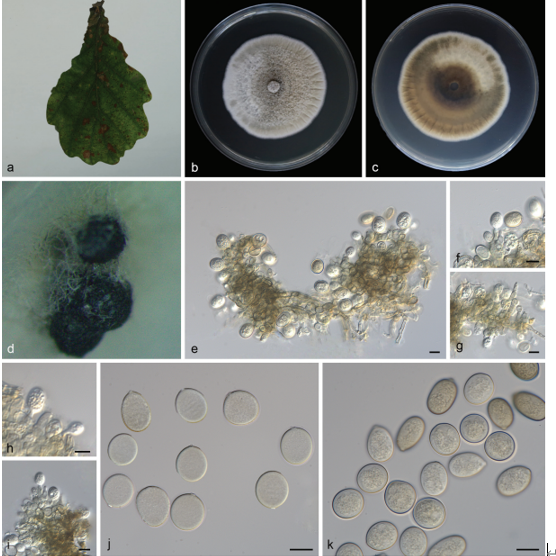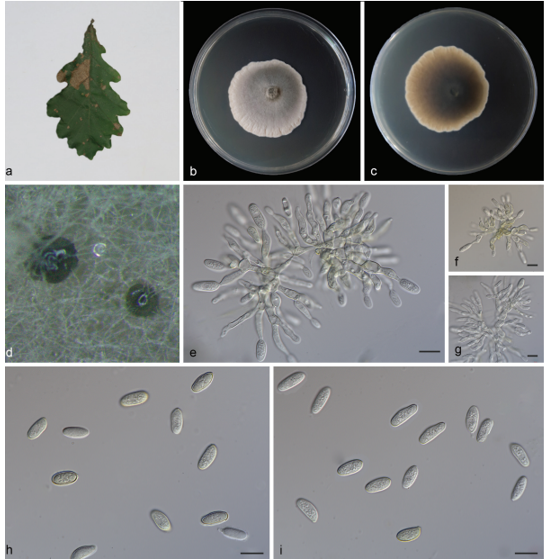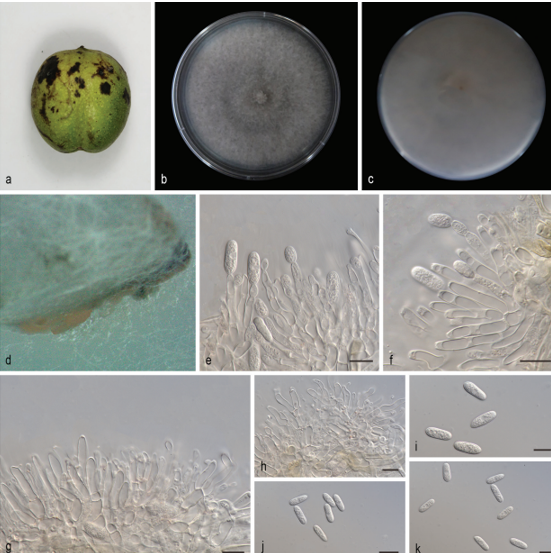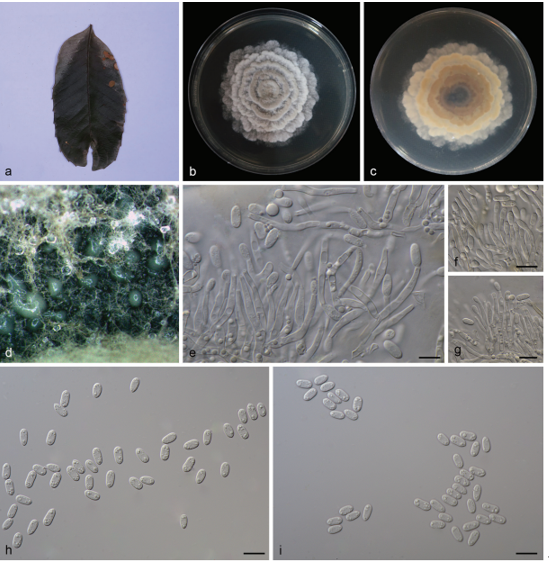Nemania caries(Schwein.) Y.M. Ju & J.D. Rogers, Nova Hedwigia2021
MycoBank No: 477305
Holotype: Hypoxylon caries (Schwein.) Sacc., Syll. fung. (Abellini) 1: 393 (1882). Hypoxylon balansae Speg., Anal. Soc. cient. argent. 26(1): 30 (1888)
Morphological description
Sexual morph: Stromata irregularly effused-pulvinate, 5.5–18 mm long × 3–9 mm wide × 0.4–0.6 mm thick, with conspicuous perithecial mounds, surface blackish-grey, carbonaceous, interior white, loosely fibrous to cottony; mature stromata lacking KOH extractable pigments. Perithecia 0.25–0.5 mm wide × 0.4–0.6 mm high, obovoid. Ostioles slightly higher than stromatal surface and with openings conic-papillate, black, inconspicuous, without encircling disc. Asci 130–200 × 7–13 μm (av. = 150 × 9.5 μm, n = 30), 8-spored, cylindrical, unitunicate, long-stipitate, the spore-bearing parts 65–95 µm long, apically rounded with a J+, short-cylindrical apical apparatus, 1.5–2.5 × 1–2.5 µm (av. = 2 × 1.5 µm, n = 30). Ascospores 9–13.5 × 3–7 μm (av. = 11.5 × 5 μm, n = 30), brown to light brown, smooth, with an inconspicuous, straight, germ slit 1/3 spore-length, nearly equilateral, with broadly rounded ends; perispore indehiscent in 10% KOH.
Asexual morph: Undetermined.
Cultures: Colonies grow on PDA at 25 °C for two weeks, with a diameter of 4 cm. Colony on the surface is white or light orange, shallow, flat, zonnate, with irregular edges and orange on the reverse side. The colony reverse is orange. Not sporulating on OA nor on PDA.
Habitat: on dead wood,
Distribution: China, Yunnan Province, Changning County, Lancang River Nature Reserve (25°01'13.56"N, 99°35'25.12"E, altitude: 262
GenBank Accession: its MW851873; rpb2 MW836069 ; tubulin MW836035; catin MW836051. Its MW851874; rpb2 MW836071; tubulin MW836036; catin MW836050.
Notes: The phylogenetic analyses show Nemania caries groups with N. changningensis with high statistical support (100% ML, 1 BYPP, Fig. 1) and the comparison calculation within the alignment found that there is a 4% difference in ITS sequences between N. changningensis and N. caries. Morphologically, N. caries resembles N. colubrina J. Fourn. & Lechat which has medium brown ascospores and a similar size of ascospores. However, N. colubrina differs from N. caries by ellipsoid-inequilateral ascospores with narrowly-rounded ends (Ju and Rogers 2002; Fournier et al. 2018). Nemania caries is distinguished from N. plumbea by its dimension of ascospores, the latter has larger ascospores (13–16 × 5.4–6.6 µm) with narrowly-rounded ends (Tang et al. 2007). The specimens we collected from the Lancang River Nature Reserve in Yunnan fit the definition of N. caries well and represent the first record from China.
Reference: [1] Song, Y. J. , & Li, S. Q. . (2008). A taxonomic study of chinese nematogmus species (araneae, linyphiidae). Organisms, diversity, & evolution(4), 8.
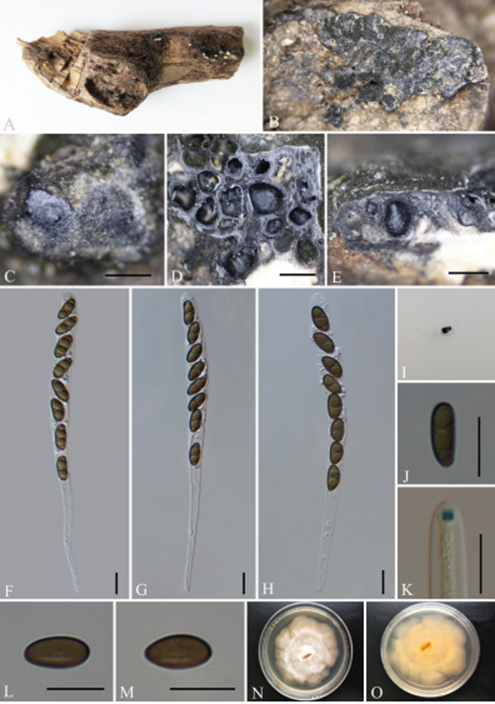 Nemania caries (GMB0070) A type material B, C stromata on the surface of host D transverse sections of stromata E longitudinal section of stroma F–H asci with ascospores I pigments in 10% KOH J ascospore with indehiscent perispore in 10% KOH K ascus apical apparatus (stained in Melzer’s Reagent) L,M ascospores N, O Colonies on PDA (N-upper, O-lower). Scale bars: 0.5 mm (C–E); 10 μm (F–H, J–M).
Nemania caries (GMB0070) A type material B, C stromata on the surface of host D transverse sections of stromata E longitudinal section of stroma F–H asci with ascospores I pigments in 10% KOH J ascospore with indehiscent perispore in 10% KOH K ascus apical apparatus (stained in Melzer’s Reagent) L,M ascospores N, O Colonies on PDA (N-upper, O-lower). Scale bars: 0.5 mm (C–E); 10 μm (F–H, J–M).


